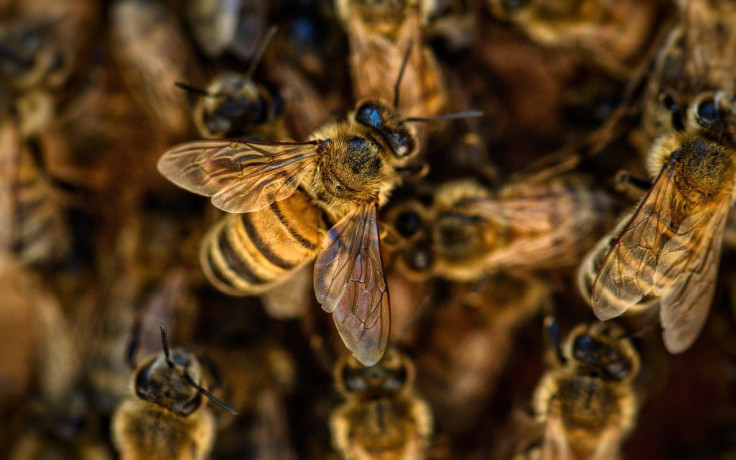North America's Rarest Bee Genus Is Not As Rare As Initially Thought
KEY POINTS
- The Brachymelecta genus has so far been represented by a single specimen
- Researchers found that the bee was misidentified
- It looked quite different due to partial albinism, they said
A bee genus thought to be the rarest one in North America is not as rare as previously thought. It turns out that the single bee that represents the genus is actually a member of a rather widespread species.
A specimen of the mysterious bee was recovered in Nevada in the 1870s and it was first described in 1879 by American entomologist Ezra Townsend Cresson, the Canadian Museum of Nature (CMN) said in a news release. In 1939, it was given the name Brachymelecta mucida and became the sole representative of the genus Brachymelecta. No other representative of the supposed mysterious bee was ever found.
What made the specimen unique was the light-colored hairs covering its abdomen's dorsal surface, CMN noted. Other related bees have dark-colored hairs. Its fore wings also had two submarginal cells when others had three.
In 2019, CMN researcher Thomas Onuferko, who was leading the new study published in the European Journal of Taxonomy, noticed something rather odd. He was examining the specimen at the Philadelphia's Academy of Natural Sciences of Drexel University when he noticed these characteristics in other specimens belonging to the Xeromelecta californica species. Some of the specimens had the same vein pattern in the wings.
Another bee with pale-colored hair was also discovered in Professor Laurence Packer's collection at York University and was later confirmed to be a Xeromelecta californica.
"Through detailed morphological comparison and images, we show that the holotype is no more than an unusual specimen of a widespread species, most recently known as Xeromelecta californica," the researchers wrote.
Mystery solved! This #bee specimen, from the 1870s, was thought to be the rarest in North America. Turns out, it's not so rare!. As published by @museumfonature's Thomas Onuferko in @ejtaxonomy, it’s an aberrant specimen of a common species. @YorkUnews https://t.co/ZOvbhJiV47 pic.twitter.com/guAlOVIEeR
— Museum of Nature (@MuseumofNature) June 15, 2021
This means that the bee once thought to be so rare is actually a Xeromelecta californica, or the California digger-cuckoo bee, which is known to be rather widespread "from western Canada to southern Mexico."
The usually dark-colored hairs were light in these specimens likely because of a form of partial albinism that caused the hairs to lack pigmentation, the researchers said.
The reclassification of the mystery bee also prompted a name change under the rules of the International Commission of Zoological Nomenclature, which is the body that governs the naming of animal species.
"Although the names Brachymelecta and Xeromelecta Linsley, 1939 were published simultaneously, the former was proposed as a genus whereas the latter was proposed as a subgenus of Melecta Latreille, 1802," the researchers explained.
The species is renamed Brachymelecta californica. The Brachymelecta genus now also covers the five other species classified under Xeromelecta.
Museums with California digger-cuckoo bee specimens will now have to rename their specimens and update their records.
This case illustrates the problem that may occur "down the line" when a new species is named from just a single specimen, the researchers said.
"The unusual specimen has puzzled bee researchers for decades, and deceived some of the world's great experts on bee taxonomy," Onuferko said. "They can now stop searching for more examples of this 'rare' bee."

© Copyright IBTimes 2025. All rights reserved.






















